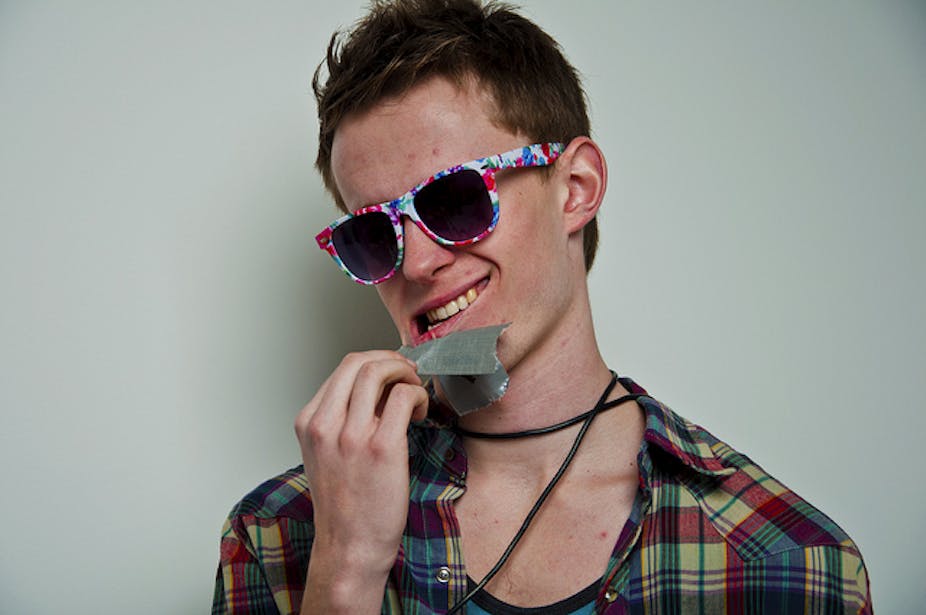Male beauty and body image receive far less attention in the media and academia than the female body. That’s despite buff, lean and muscular male bodies becoming an increasingly popular features of blockbuster films, magazines and popular culture.
But just like the female body, the male body has been depicted, evaluated and scrutinised as an aesthetic product since ancient times.
So how have portrayals of the ideal male body changed over time?
The perceived attractiveness of muscular men has grown since around the 1950s, alongside the muscularity of male models. The body size of male Playgirl models gradually increased from the 1950s to the late 1990s with an increase in muscle and lean body mass rather than body fat. The same trend is also reflected in action figure heroes such as GI Joe, who have become more muscular, with physiques comparable to advanced bodybuilders.

The pursuit of muscularity is closely tied to Western cultural views of masculinity and the masculine gender role, which prescribe that men should be powerful, strong and get things done.
This preference for a muscular male body is present across men’s lifespan and appears to develop early, at around seven years of age. More than half of boys at this age already desire to be more muscular and may become preoccupied with exercise for the purpose for building muscles.
As boys in Western cultures grow into young men and are exposed to increasing media depictions of the muscular ideal, as many as nine out of ten wish they were more muscular.
Muscle mania
The muscular ideal is not a modern notion. Muscularity has been admired throughout history, particularly in ancient Greece and Rome, and this is evident from the art and literature of the time. Well-proportioned males were idealised for their defined muscles and low body fat. Think of the great historical and mythical heroes of the time – Achilles, Odysseus, Alexander the Great, and Julius Caesar. All were all described as both muscular and powerful.

Muscularity was also highly valued during the Renaissance when there was a return to classical ideals. This is most clearly seen in Michelangelo’s representation of David, who is youthful, strong, symmetrical, and muscular but lean.
Leanness
Modern men don’t just have to be muscular – the ideal man should also be lean. Studies show women perceive men with body mass indices toward the lower end of the normal weight range as more attractive.
Similarly, researchers who have used Figure Rating Scales to assess men’s ideal body fat have found that men generally select figures that represent low to moderately-low body fat (figures four to five on a nine-point scale).
One of the main reasons for a greater focus on leanness in recent years is the rising prevalence of obesity. This has increased our awareness of the risks associated with excess weight and has also promoted a culture which values leanness for both health and aesthetic reasons.
As a result of these cultural shifts, studies show that more than 30% of adolescent and young adult men are concerned about their weight and try to shed excess kilos through purging, the use of laxatives or less extreme strategies, such as skipping meals and increased exercise.

Metrosexuals
The modern metrosexual is a prime example of the image-conscious man for whom leanness and youthfulness have become important standards of male beauty.
The metrosexual man spends considerable resources and time on appearance and lifestyle. He is considered the fashionable man who is highly focused on the sanitised body which should, according to him, be free of hair, sweat and odour.
As with women, the media are guilty of promoting these images. But men who are persuaded to adopt these ideals are also guilty of perpetuating the metrosexual stereotype. And so it becomes a vicious cycle with more and more men drawn in to the fray.
In an attempt to improve their attractiveness and perception of cleanliness, almost two thirds of young adult men from the United States and Australia have removed their body hair (below the neck) at least once.
But the metrosexual is not a modern invention. Early Egyptian men were also metrosexual, and they valued both leanness and youthfulness. Egyptian men (and women) regularly used oils and creams to keep their skin soft and supple, and to prevent cracked dry skin. These cosmetics were so highly valued they were often accepted by workers as part of their wages.

Egyptian men and women carefully watched their weight and tended to eat more fruits and vegetables than meats. On the whole, men tended to be relatively thin and even frail-looking.
Interestingly, they also valued hairlessness. Men usually had a thin moustache or goatee, and they preferred their faces, chests and even leg hairs to be shaven, as they considered an abundance of hair a sign of impurity and uncleanness.
Modern pressures
The pursuit of muscularity, leanness and youthfulness are clearly not new aspirations for men. But what has emerged in the past two decades is an ever increasing range of media (magazines, films, television, and the Internet) that promote a profoundly image-conscious society.
With increasingly sophisticated technologies and marketing strategies, the male body is becoming more exploited and commodified, and this is giving rise to higher levels of body image and appearance concerns among young men.
Men should be discouraged from adopting or internalising these unrealistic standards as the “yardstick” by which their own body image should be measured.

